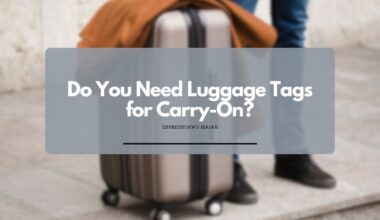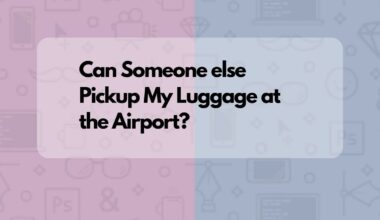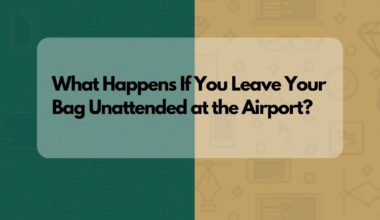As an Amazon Associate, I earn a small commission from qualifying purchases. Learn more about this.
If you’ve ever stood in an airport, watching your suitcase disappear into the system behind the check-in counter, you might’ve wondered: What exactly happens to my bag once it’s out of sight?
Do Bags That Go Under the Plane Get Checked?
Let’s get straight to the point: yes, your bags do get checked.
But it’s not in the way you might be imagining – a group of airport staff gathered around, rummaging through your belongings, commenting on your choice of socks.
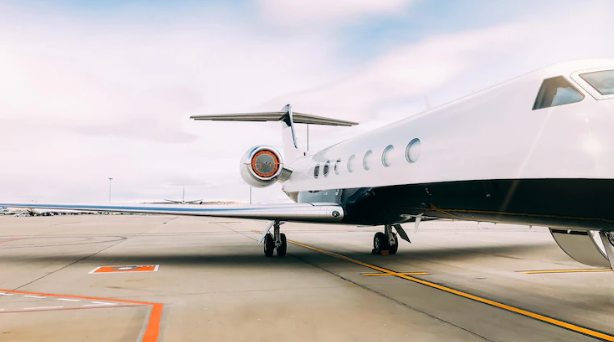
No, that’s actually far from what happens.
Once your luggage is out of your sight, it typically undergoes a screening process similar to the one your carry-on bags go through.
This is primarily for security reasons, ensuring that no hazardous materials or illegal items are being transported.
Most airports use advanced X-ray machines to scan the contents of checked luggage. The images produced allow security personnel to identify objects that might be of concern.
If something looks suspicious or isn’t easily identifiable, that’s when your bag would be flagged and might be opened for a more thorough manual inspection. Hence, the chance of your bag being manually checked is quite small.
In some countries or specific airports, they might also employ explosive detection systems or even sniffer dogs to screen for drugs and explosives. It’s a rigorous process designed to ensure the safety of all passengers on board.
Now, some of you might wonder about privacy.
Well, the goal isn’t to invade personal space but to ensure security. Screeners are trained professionals, and they’re looking for specific threats, not evaluating your packing skills or damaging your valuables.
However, this information underscores the importance of being careful about what you pack.
Always check the guidelines provided by airlines and international regulations, especially when traveling abroad.
Certain seemingly harmless items might be flagged by security systems and could cause unnecessary delays.
Common Materials that Are Prohibited
Firstly, it’s important to note that each airline and country may have its own specific rules. However, some items are universally banned. High on this list are explosives.
This might sound like a no-brainer, but it includes not just obvious items like fireworks, but also less obvious ones like certain types of aerosol products.
Many airlines prohibit household aerosols like spray paint or cleaning products that contain bleach or ammonia.
Flammable items are another big category. Lighter fluid, paint thinner, and even strike-anywhere matches are generally not allowed in checked luggage.
While you can usually bring a lighter with you in your carry-on or on your person, extra fuel or flints are usually a no-go.
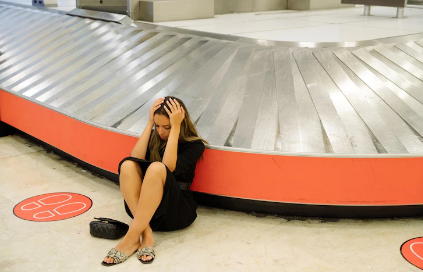
Corrosive materials are also on the blacklist.
That includes spillable batteries and strong acids. If you’re transporting something like a car battery, you’ll need to make special arrangements, because it won’t be allowed in your checked bag.
Sharp objects might be allowed in your checked luggage, but they’ve got to be packed properly. We’re talking about items like knives, scissors, and tools. These must be securely wrapped to ensure they don’t pose a risk to baggage handlers or security personnel.
Certain foods can also be problematic. While most airlines allow food, some items like fruits and vegetables might be restricted depending on your destination due to agriculture laws. It’s crucial to check these details before you fly.
You should also be cautious with medicinal substances. While prescription medications are generally allowed, some over-the-counter medications might be restricted depending on the country you’re flying to. Always keep prescriptions in their original packaging and carry a copy of your prescription to avoid any issues.
Does your Luggage go on the same plane as you?
I’ll be honest with you, I’ve seen people ask this question severally, and it quite be funny at first but it’s actually sensible as weird things do happen in airlines generally.
Under normal circumstances, the system is designed to ensure that your luggage arrives at the same destination as you do, at roughly the same time.
Airlines have sorting systems, often automated, that match baggage tags to flight numbers.
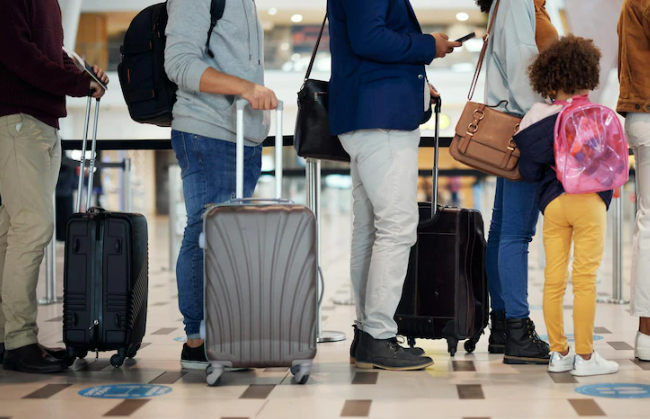
Once your luggage has passed through all the security checks we talked about in the previous section, it’s directed towards the plane you’re supposed to be on.
Barcode scanners and RFID technology are commonly used to track the bag’s journey and make sure it gets onto the correct flight.
However, there are a few scenarios in which your bag might not end up on your flight:
- Operational issues: Sometimes equipment malfunctions or weather disruptions can mean your bag doesn’t get loaded onto your plane in time.
- Last-minute check-ins: If you check your bag right at the cut-off time, there might not be enough time for it to go through all the necessary processes to make it onto your flight.
- Security holds: Occasionally, a bag might be held back for additional security checks, causing it to miss its flight.
- Errors: While the systems are advanced, mistakes can still occur, whether it’s a barcode misreading or human error.
Despite these potential hiccups, it’s essential to stress that the vast majority of bags do fly on the same plane as their owners.
And for the small percentage that might take a detour? Airlines are generally quite efficient at reuniting you with your belongings as quickly as possible.
Conclusion
While the majority of bags will smoothly go through the system without any manual check, it’s always a possibility based on what’s inside.
The primary aim is safety – ensuring that flights are free from threats and that all passengers reach their destinations without any unexpected hiccups.



